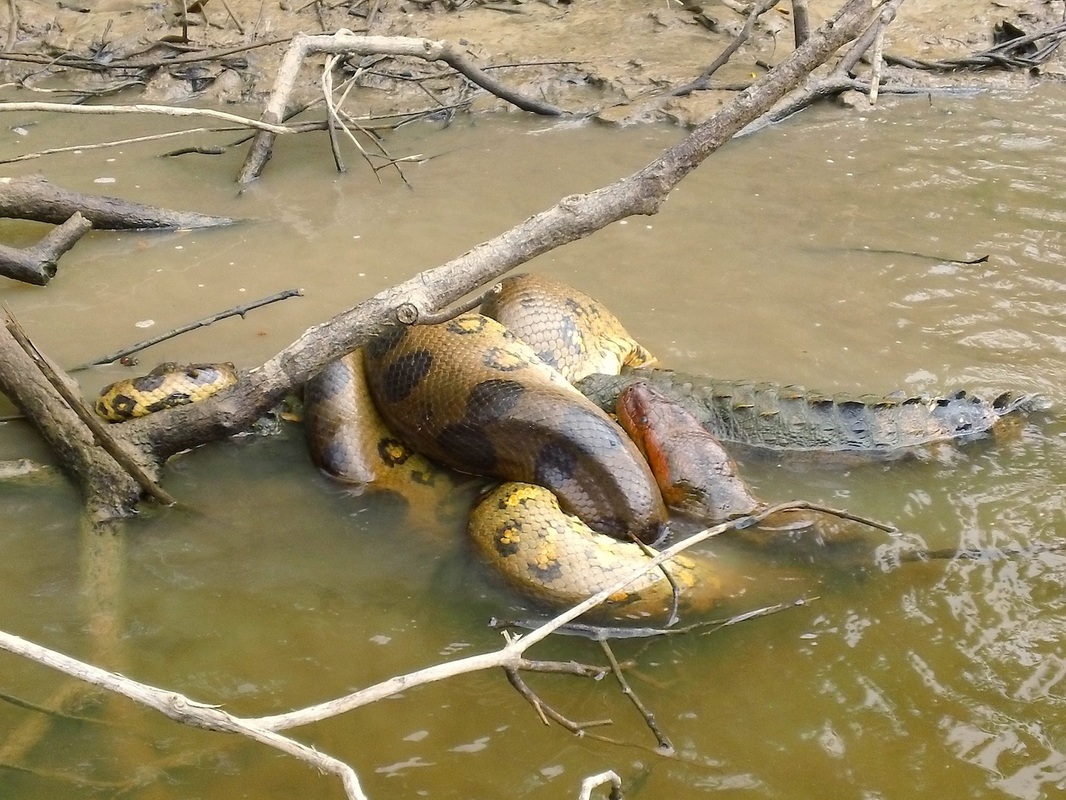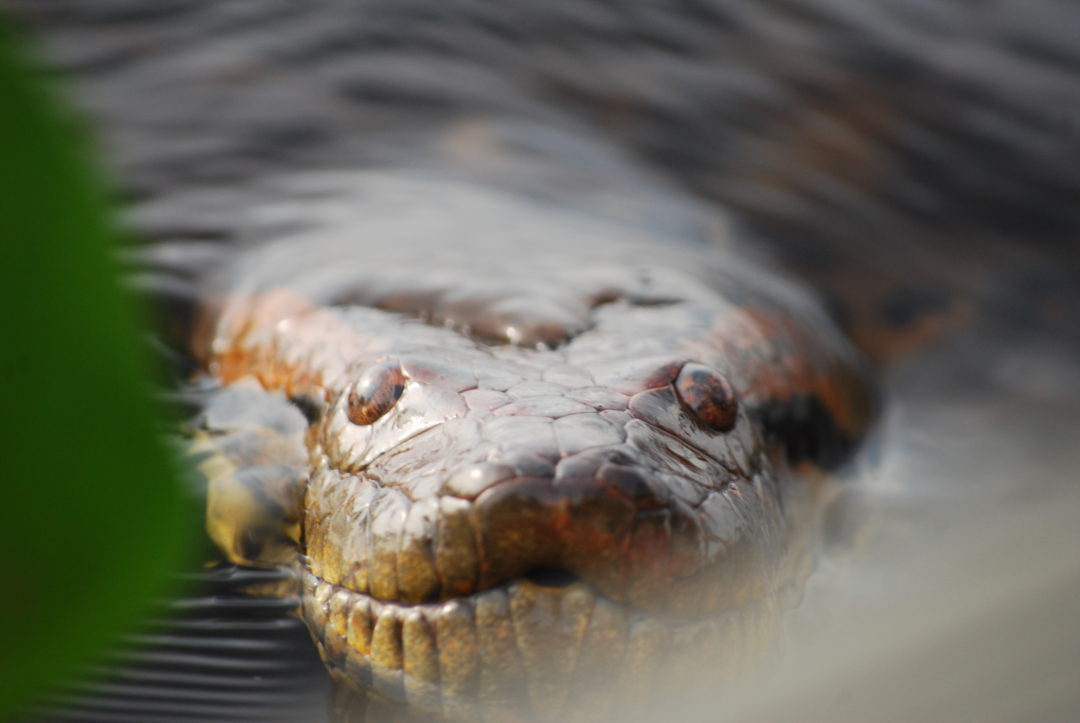 Snakes. Feared by some, loved by others. Their limbless bodies are extremely flexible and their scaly skin comes in a variety of colors. Snakes can be both gruesome and awesome at the same time. Guyana is home to some of the most attractive snakes, one such, is the giant anaconda. The green anaconda is the heaviest and largest snake in the world and the second longest.
Snakes. Feared by some, loved by others. Their limbless bodies are extremely flexible and their scaly skin comes in a variety of colors. Snakes can be both gruesome and awesome at the same time. Guyana is home to some of the most attractive snakes, one such, is the giant anaconda. The green anaconda is the heaviest and largest snake in the world and the second longest.
Species of the Anaconda
- Eunectes murinus also known as the green anaconda is the largest species.
- Eunectes notaeus also known as the yellow anaconda is a small species.
- Eunectes deschauenseei also known as the darkly-spotted anaconda is a rare species.
- Eunectes beniensis also known as the Bolivian anaconda is the most recently defined species.
The green anaconda can be found in the land of Guyana. It is also known as the common anaconda and water boa; it is a non-venomous boa species. Their color pattern is of an olive-green background overlaid with black blotches along the body. They have eyes that allow them to see out of the water while swimming; their eyes are high on their head which helps them to look out of the water without revealing their body. The weight for an average-range adult is about 66 to 154 pounds but they can grow to more than 29 feet, weigh more than 550 pounds, and measure more than 12 inches in diameter. Their average lifespan in the wild is about 10 years and they can live up to 30 years in human care.
Scientific Classification of the Green Anaconda
Green Anaconda – Eunectes murinus (Scientific name)
- Kingdom: Animalia
- Phylum: Chordata
- Class: Reptilia
- Order: Squamata
- Suborder: Serpentes
- Family: Boidae
- Genus: Eunectes
- Species: Eunectes murinus
Eunectes murinus are both Greek words. Eunectus, means “good swimmer”, which the green anaconda definitely is since it spends most of its time in the water. Murinus, means “of mice”, implying that green anacondas eat mice. Anaconda comes from the Tamil word anaikolra, which means “elephant killer”.
Diet of the Green Anaconda
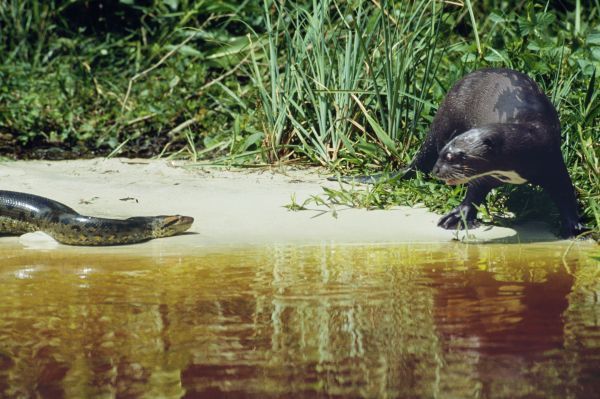
The green anaconda can go for months without a meal, it is capable of hunting on land but prefers to remain in the water, where his thick, muscular body is easier to maneuver. Many local stories and legends report that the anaconda eats humans, but little evidence supports any such activity. Cannibalism is recorded which involves the larger female consuming a smaller male, this might be due to the fact that the female anaconda requires additional food intake after breeding, to sustain the long period of gestation. So, if a male is nearby, the female views it as an opportunity to get some nutrition. However, they eat a wide variety of prey from small fishes, birds, reptiles to large tapirs, deer, capybaras, caimans and even jaguars.
Did you know?
The anaconda strikes by coiling its body around the prey, it then constricts the prey until it is suffocated. After asphyxiating their prey, they are able to unhinge their jaws to swallow their prey head-first and whole, regardless of size.
Tip: Even though the green anacondas are non-venomous they have six rows of backward-pointing teeth, four on the upper jaw and two on the lower. What, then, is the use for their teeth? They use their sharp teeth to latch on to their prey, this prevents the prey from escaping.
Habitat
Anaconda’s can be found mainly in the tropical rainforest of the Amazon. Since it is easier for them to move in the water than on the land, they live in slow-moving streams, marshes and swamps.
Reproduction
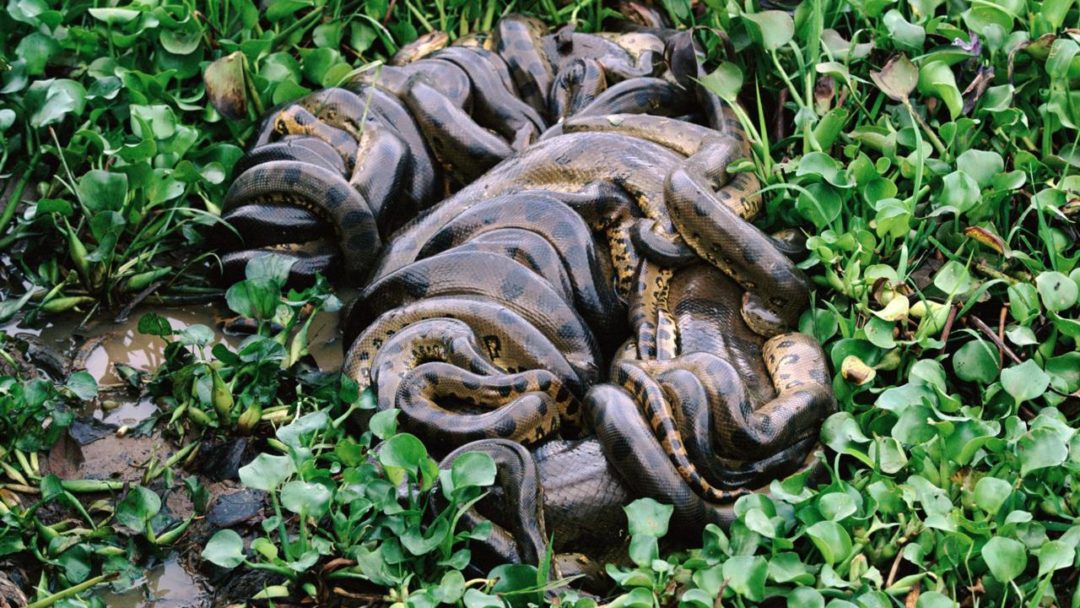 When it comes to mating, up to twelve males can wrap around the same female and attempt to copulate. This is known as ‘breeding balls’ and the group can stay in this position for two to four weeks. It’s like a slow-motion wrestling match between the males, all fighting for the opportunity to mate with the female. The strongest and largest male is often the winner; however, the females are physically much larger and stronger and may decide which male she wants. Gestation can last about six to seven months and the females don’t lay eggs as many other snakes do, instead they give birth to live young, around 20 to 40 at a time. After giving birth, the females may lose up to half their weight. When the babies are born, they are about 2 feet long and are almost immediately able to swim and hunt, receiving no parental care.
When it comes to mating, up to twelve males can wrap around the same female and attempt to copulate. This is known as ‘breeding balls’ and the group can stay in this position for two to four weeks. It’s like a slow-motion wrestling match between the males, all fighting for the opportunity to mate with the female. The strongest and largest male is often the winner; however, the females are physically much larger and stronger and may decide which male she wants. Gestation can last about six to seven months and the females don’t lay eggs as many other snakes do, instead they give birth to live young, around 20 to 40 at a time. After giving birth, the females may lose up to half their weight. When the babies are born, they are about 2 feet long and are almost immediately able to swim and hunt, receiving no parental care.
Communication
The females give off a scent called pheromones which is an air-borne chemical emission. Males flick their tongues in the air to pick up the chemical presence, this allows them to track the scent and approach the females. After tracking the scent, males proceed to the female from all directions.
Green Anacondas in Guyana
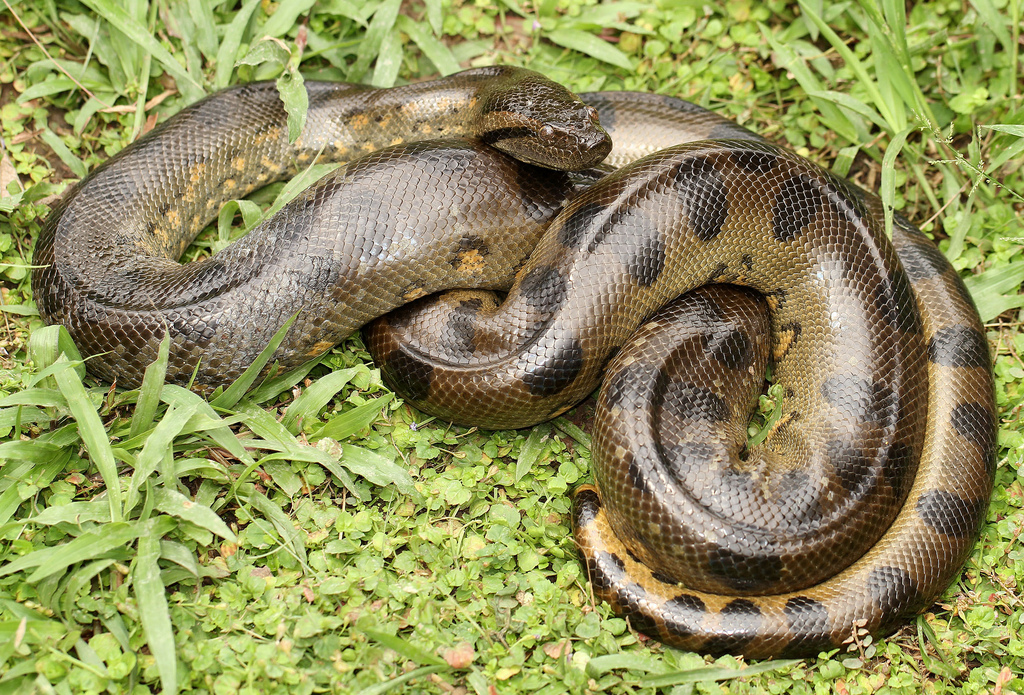 Guyana is the home of many giants. The green anaconda is one of them; they are adored for being the largest and heaviest snake in the world. They have a unique mating pattern and are admired for the amount of live young they can produce at a time. The green anaconda is an amazing reptile that must be seen.
Guyana is the home of many giants. The green anaconda is one of them; they are adored for being the largest and heaviest snake in the world. They have a unique mating pattern and are admired for the amount of live young they can produce at a time. The green anaconda is an amazing reptile that must be seen.
Article References:
- https://en.wikipedia.org/wiki/Anaconda
- https://en.wikipedia.org/wiki/Green_anaconda
- https://animals.mom.me/snakes-guyana-8172.html
- https://www.nationalgeographic.com/animals/reptiles/g/green-anaconda/
- https://nationalzoo.si.edu/animals/green-anaconda
- https://www.rainforest-alliance.org/species/green-anaconda
- http://ipfactly.com/anacondas/

